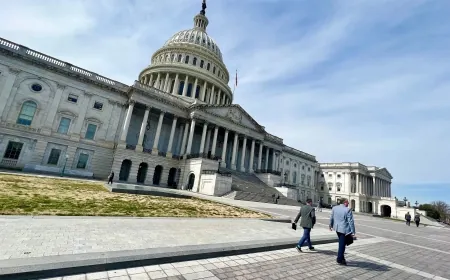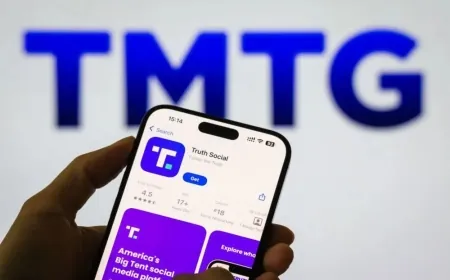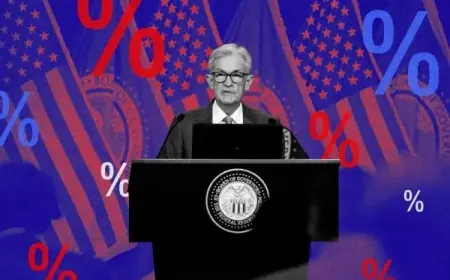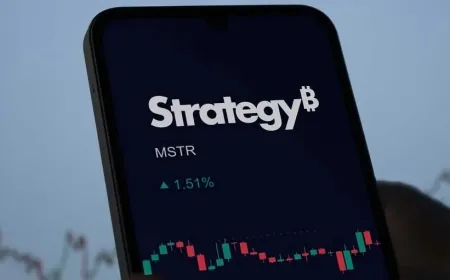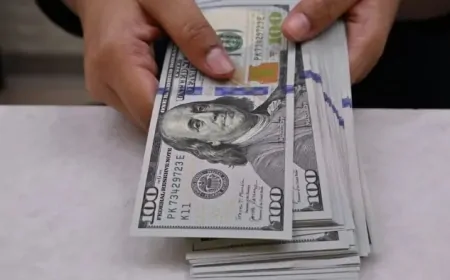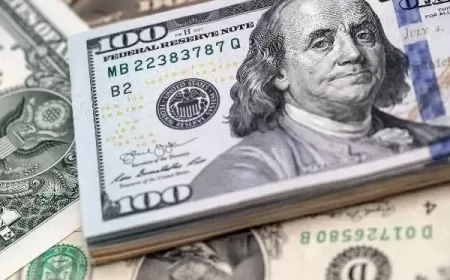U.S. Middle-Class Families Could Lose $20,000 Under Trump’s Tariffs
New data shows Trump’s tariffs may cost middle-class families up to $20,000. Food, cars, and electronics are all getting more expensive.

Tariffs aren’t just an abstract policy battle—they’re taking a direct bite out of household budgets. For middle-class families, the rising cost of everyday expenses is now tied to a growing list of import taxes affecting products from food to electronics.
According to new research from the University of Pennsylvania’s Wharton School, tariffs imposed or maintained over four years could lead to a $22,000 lifetime loss per household. The impact is most visible in categories families can’t avoid: groceries, appliances, cars, and consumer goods.
At a time when inflation has already driven up the cost of essentials, these additional tariff costs are stretching middle-class wallets even further.
Grocery Bills and Everyday Goods Get More Expensive
One of the biggest financial hits comes from the supermarket checkout line. The Yale Budget Lab estimates that tariffs in place for four years could increase grocery bills by up to $4,900 per year for some households. That estimate factors in tariffs on imported food products, as well as supply chain costs that ripple through the system.
Seann Malloy, managing partner at Malloy Law Offices, LLC, has seen the impact firsthand with his clients. “I’ve watched grocery bills jump by 10% just from food tariffs,” he said. For a middle-class family already spending thousands annually on groceries, that increase compounds quickly.
Beyond groceries, the Yale model also projects a $3,800 annual loss in purchasing power per household due to the broader effects of tariffs. Over four years, that could mean as much as $15,000 to $20,000 in extra expenses for a typical family—not including the lifetime effects of reduced savings and higher debt loads.
How Tariffs Raise Prices on Big-Ticket Items
Tariffs don’t hit just one sector—they affect nearly every major spending category for the middle class. Imported goods face higher costs, and businesses typically pass 80% to 95% of those costs onto consumers, according to Malloy.
Here’s how that plays out in real-world expenses:
-
Cars: An average $30,000 vehicle could become $2,520 more expensive due to tariffs on imported parts and materials.
-
Electronics: A $500 smartphone could cost $75 more, while laptops, tablets, and televisions also carry hidden tariff costs.
-
Clothing: Retail clothing prices have risen by about 17%, especially for items produced overseas.
-
Shipping and Fuel: Even delivery costs are climbing. Tariffs on imported fuel products lead to a 5% to 7% increase in shipping costs, pushing prices up on everything from groceries to online purchases.
Appliances Still Carry the Costs of Past Tariffs
The impact of tariffs isn’t new—but it’s cumulative. A study from the Becker Friedman Institute at the University of Chicago found that tariffs introduced in 2018 caused washer and dryer prices to surge by 12%, with similar increases seen in other household appliances. Those costs have yet to fully reset, meaning families continue paying more for large purchases they can’t delay.
This same pattern is unfolding again in 2025, as tariffs remain on goods that are part of daily life.
Why the Middle Class Feels It First
Middle-income families are often hit hardest by tariffs because they don’t have room in their budgets to absorb long-term price increases. Higher-income households may shift spending or buy in bulk, while lower-income families may already rely on government assistance. The middle class, however, tends to bear the full brunt of rising costs without subsidies or special protections.
In many cases, families are forced to cut back on savings, delay major purchases, or take on additional debt just to cover everyday expenses. Malloy says he has clients who’ve reduced retirement contributions by $2,000 a year simply to make ends meet in a tariff-driven economy.
How to Reduce the Impact on Your Budget
While families can’t change federal trade policy, there are ways to minimize the financial hit from prolonged tariffs:
-
Build a Cash Buffer: Malloy recommends setting aside at least $5,000 in emergency savings to handle unexpected costs without resorting to high-interest credit cards.
-
Shop Smarter: Buying in bulk from warehouse retailers like Costco can offset some price hikes. Malloy estimates a $200 membership can yield $1,000 in annual savings, especially on groceries and household staples.
-
Use Local Markets: Farmers’ markets may offer more competitive produce prices, though demand spikes could drive costs up if tariffs persist.
-
Consider Credit Union Loans: For families facing larger expenses, credit unions often offer lower-interest personal loans than traditional banks or credit cards, reducing the cost of borrowing.
-
Consult a Financial Advisor: Experts recommend working with an advisor to prioritize savings over discretionary spending during periods of prolonged inflation and trade-related price hikes.
The Long-Term Cost of Trade Wars
Tariffs are often sold as tools to protect domestic industries, but for consumers, they usually translate into higher prices across the board. Whether it’s groceries, clothes, electronics, or transportation, middle-class households are now footing the bill for policies that reshape global trade.
If tariffs remain at 2025 levels for the full presidential term, the average American family could face up to $20,000 in added costs over four years, according to independent research models. For households already under pressure from inflation, that’s a financial hit with consequences far beyond politics.
| Category | Specific Details | Estimated Added Cost |
|---|---|---|
| Total 4-Year Family Cost | Middle-class families pay more for nearly everything they buy through 2029. | Up to $20,000 total |
| Annual Cost Increase | Yearly rise in living expenses from tariffs on goods and imports. | $3,800–$5,000 per year |
| Grocery Bills | Food prices increase due to tariffs on imported meat, seafood, produce, and packaged goods. | Up to $4,900 more per year |
| New Car Prices | Tariffs on steel, aluminum, and auto parts raise the price of new cars. | $2,520 more for a $30,000 car |
| Car Repairs & Parts | Higher costs for repairs due to increased prices on imported auto parts. | 8–10% increase in repair costs |
| Clothing & Footwear | Tariffs on textiles and imports raise clothing and shoe prices. | 17% average price hike |
| Electronics | Phones, laptops, and TVs cost more due to tech import tariffs. | 10% increase; +$75 on a $500 phone |
| Home Appliances | Appliances stay expensive as 2018 tariffs remain in place. | 12% price increase |
| Online Orders & Shipping | Tariffs on imported fuel raise delivery and shipping fees. | 5–7% more in delivery costs |
| Credit Card Use | More households rely on credit cards to cover rising living costs. | Higher debt, more interest |
| Savings Cutbacks | Families reduce retirement or emergency savings to keep up with costs. | $2,000+ less in savings per year |
| Emergency Fund Advice | Experts recommend a $5,000 cash reserve to handle tariff-related expenses. | $5,000 safety buffer |
Also Read: How Much Tax You’ll Save in 2026 Under Trump’s One Big Beautiful Bill














